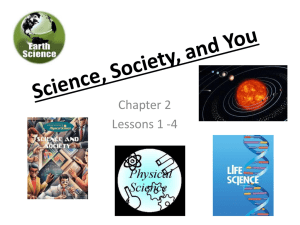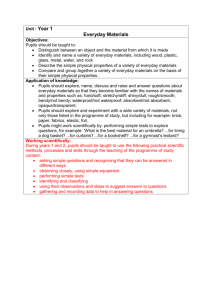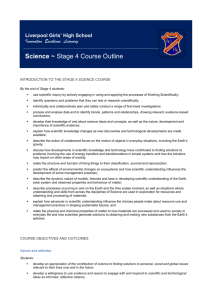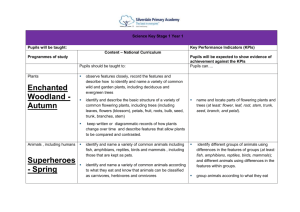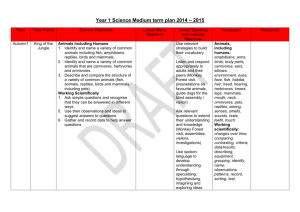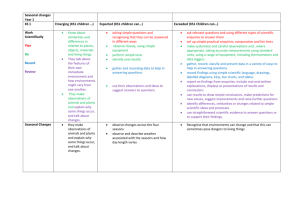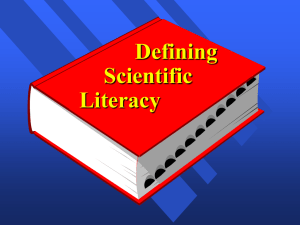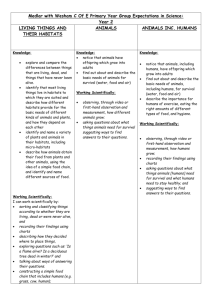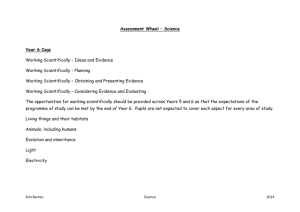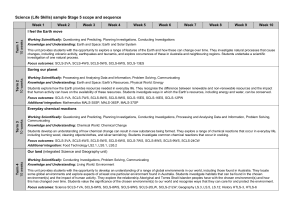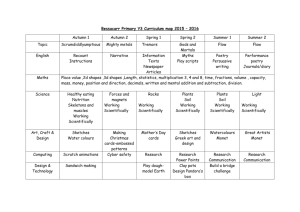assessment_wheel_year1
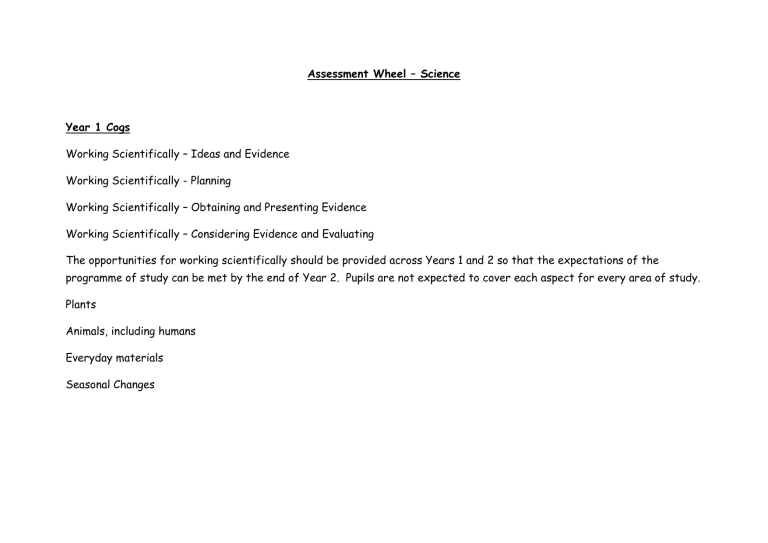
Assessment Wheel – Science
Year 1 Cogs
Working Scientifically – Ideas and Evidence
Working Scientifically - Planning
Working Scientifically – Obtaining and Presenting Evidence
Working Scientifically – Considering Evidence and Evaluating
The opportunities for working scientifically should be provided across Years 1 and 2 so that the expectations of the programme of study can be met by the end of Year 2. Pupils are not expected to cover each aspect for every area of study.
Plants
Animals, including humans
Everyday materials
Seasonal Changes
Ideas and evidence
YEAR 1
Working
Scientifically
W S
Planning
Experimental
Work
W S
Obtaining and
Presenting
Evidence
W S
Considering
Evidence and
Evaluating
I can ask simple questions and recognising that they can be answered in different ways.
I can identify and classify. I can perform simple tests using simple equipment, observing closely.
I can gather and record data to help in answering questions.
I can use my observations and ideas to suggest answers to questions
I can ask relevant questions and using different types of scientific enquiries to answer them.
I can set up simple practical enquiries, comparative and fair tests making accurate and careful observations.
I can gather, record, classify and present data in a variety of ways to help in answering questions.
I can use results to draw simple conclusions and suggest improvements
Plants
Animals including
Humans
Everyday
Materials
Seasonal
Changes
I can identify the roots, stem, trunk, leaves and flowers of a plant.
I can name and draw and label the basic parts of the human body.
I know the 5 senses and which part of the body is linked with which sense.
I can identify and some plants.
I know the difference between deciduous and evergreen trees.
I can identify and name some animals.
I can observe and record the changes in plants in my local
Environment over the course of the year.
I can describe and compare the main body parts of different animals.
I know that plants need water and light to grow
I know about common animal’s diets and can identify if they are herbivore, carnivore or omnivore.
. I can observe and describe the differences between plants grown in light and dark places.
I can group animals by their body parts and what they eat. I can explain how I sorted the groups.
I know the difference between an object and the material it is made from.
I can name the four seasons
I can identify and name different everyday materials such as; wood, plastic, glass, metal, water and rock.
I know that some materials are natural and some are man made.
I can observe and record the changes in my environment over the seasons.
I can explore and test different materials and can name the different properties; hard, soft, stretchy, stiff, shiny, dull, rough, smooth, bendy, not bendy, waterproof, not waterproof, absorbent, not absorbent, transparent, translucent and opaque.
I can tell you what weather we have with each season.
I know we chose the materials we use to make things because of their properties.
I can group materials by their properties.
I can see and describe how the length of the day changes with the seasons.
I can investigate how the shapes of solid objects can be changed by twisting, squashing, bending and stretching.
I am starting to recognise and use the words fish, amphibian, reptile, bird, and mammal when grouping animals.
I can find out about scientists who have discovered and made new and useful materials.
